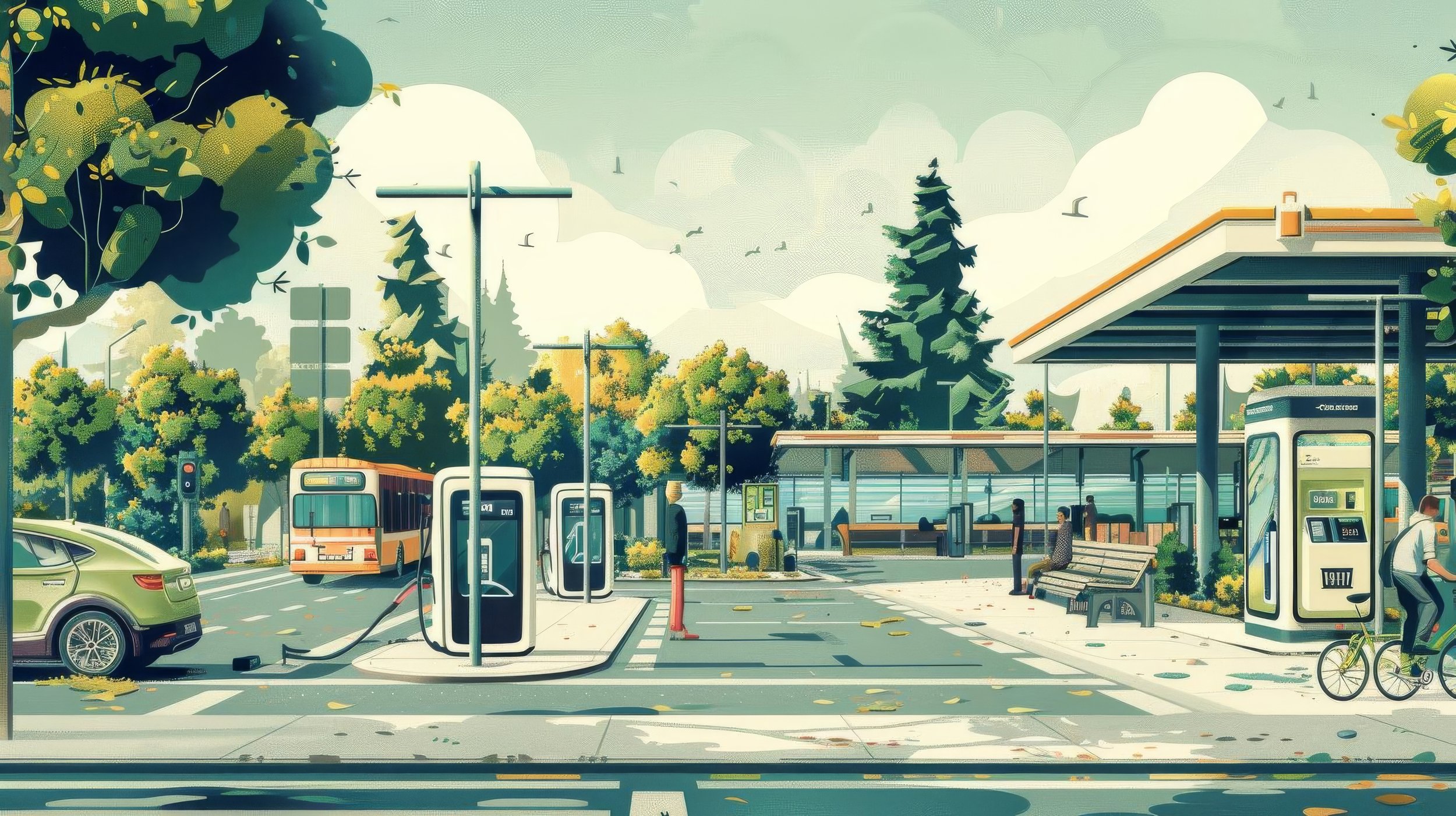Mobility Hub
By Brooke Nelson with the Town of West Hartford CT
In our pursuit to improve housing availability, walkability and to reduce of vehicle miles traveled, there is an equally important element that serves as the underpinning to our newly embraced way of life – Mobility Hub. The concept has been in circulation for years within the transportation space. It was originally conceived to support transit with rail or bus station being the focal point. The concept migrated from transit centric to provide travelers with mobility options to fill the gaps existed in our transportation network.
Today, mobility hubs evolve further to strengthen the connection between cities and towns. They serve as physical and informational platform to co-locate shared services. They complement transit while address contemporary social issues like equity, sustainability and climate change. The collaborations between public and private agencies afforded mobility hubs to pop up in smaller cities and towns. They come to fruition in varying sizes and complexity in services. One does not have to live in a city to experience the benefits of shared services presented to travelers on a common platform and information portal.
What is a Mobility Hub?
By definition, a mobility hub is a physical landing where travelers can change from one mode of transportation to another to reach their destination. It also serves as an information and payment platform to facilitate the movement of people. A hub is designed with attractive amenities, offering convenient and easy access to shared services with the emphasis on travelers’ experience.
Today’s hub is more than a train station or a bus depot. It fills the gap in our transportation system with shared mobility options while addresses environmental challenges that our predecessors may not have encountered.
Prioritize the movement of people with shared mobility services to complement public transit.
Reduce single occupancy vehicle usage and overall vehicle dependency to lower carbon emission.
Allocate the use of public space equitably to provide mobility access to all members of the community, in response to changing demands.
Create inviting public space focusing on travelers’ experience to promote the use of shared services.
Provide timely information for user’s awareness of modal options, public events and local news.
Key Features of a Mobility Hub
Mobility Hubs may come in different sizes with different options in transportation services and streetscape amenities. A hub is designed to meet the needs of its local community while staying within the context of the existing location and transportation network. Mobility hubs are implemented in cities and towns of all sizes from urban to rural areas where public transit may not be readily available. Their role ranges from serving a neighborhood, a town or city center, to being a regional hub anchored with bus or rail station.
Mobility hubs are strategically located as platform landing with services to support transit, walking, biking, shared mobility, e-mobility and parking. Services may include the following items, pending the needs of the community in contrast with the typology of the location:
Pick-up & Drop-off (PUDO) zone to facilitate the movement of riders using on-demand rideshare services.
Parking for personal vehicles, carshare and/or EV carshare.
Charging infrastructure for personal or shared electric vehicles, e-bikes, e-scooters and e-wheelchairs.
Bikeshare and bike parking to encourage biking with or without bike ownership.
Bus shelter as candidate to transform the location into a hub with additional amenities.
Kiosks to provide information on shared services, local news and public events. Interactive, electronic information kiosks can be multi-tasked to support public WiFi and personal device charging.
Branding to easily recognize a mobility hub or network of hubs within a county, city or town.
Placemaking to introduce aesthetic elements to enhance travelers experience with benches, planters and visual arts.
Planning and Implementation
The planning, design and implementation of a mobility hub require extensive coordination and collaboration among public, private and non-profit agencies. Topics of discussion may include funding, site selection, space negotiation, prioritization of services, permitting and policy alignment. Engaging constituents to participate in the planning process is a critical step in identifying hub locations, their unique opportunities and challenges. Participating constituents may include:
Local government agencies.
Local community members.
Adjacent businesses and property owners.
Transit authorities.
Private and/or non-profit mobility service providers.
To learn about mobility hubs, there are a number of planning guides as publication available for references. As case studies, they profile contemporary hubs with goals, objectives, key criteria and challenges. If the skills are not available in-house to support this type of initiative, cities and towns may choose to seek professional services in the transportation planning space. They can help municipalities to navigate the process of planning, funding and project management. Regional non-profit planning organizations may be another resource for neighboring cities and towns to leverage - Especially if they share common interests in proximity and transportation network.
Operations and Maintenance
The effectiveness of a mobility hub relies on how well it operates and being maintained. Operations and Maintenance (O&M) extend from housekeeping, beautification, structural upkeep, to the performance of individual shared services offered on the platform. Will O&M be supported collectively among local municipalities, public agencies, community members and mobility service providers? Or will the responsibilities be assigned to a single operator, in-house or contracted, to manage a mobility hub or a series of hubs.
Mobility hubs are not intended to be static, fixed in scope and services. As new technologies emerge, a hub should be modular in design to evolve with new offerings. Hub’s operator is expected to monitor, evaluate and report on measures reflecting the use of the hub and its impact on travelers’ behavior. The effectiveness of a mobility hub, expressed in quantitative measures, will help municipalities to improve long-term objectives with respect to health & wellness, accessibility, equity and sustainability of their community.

